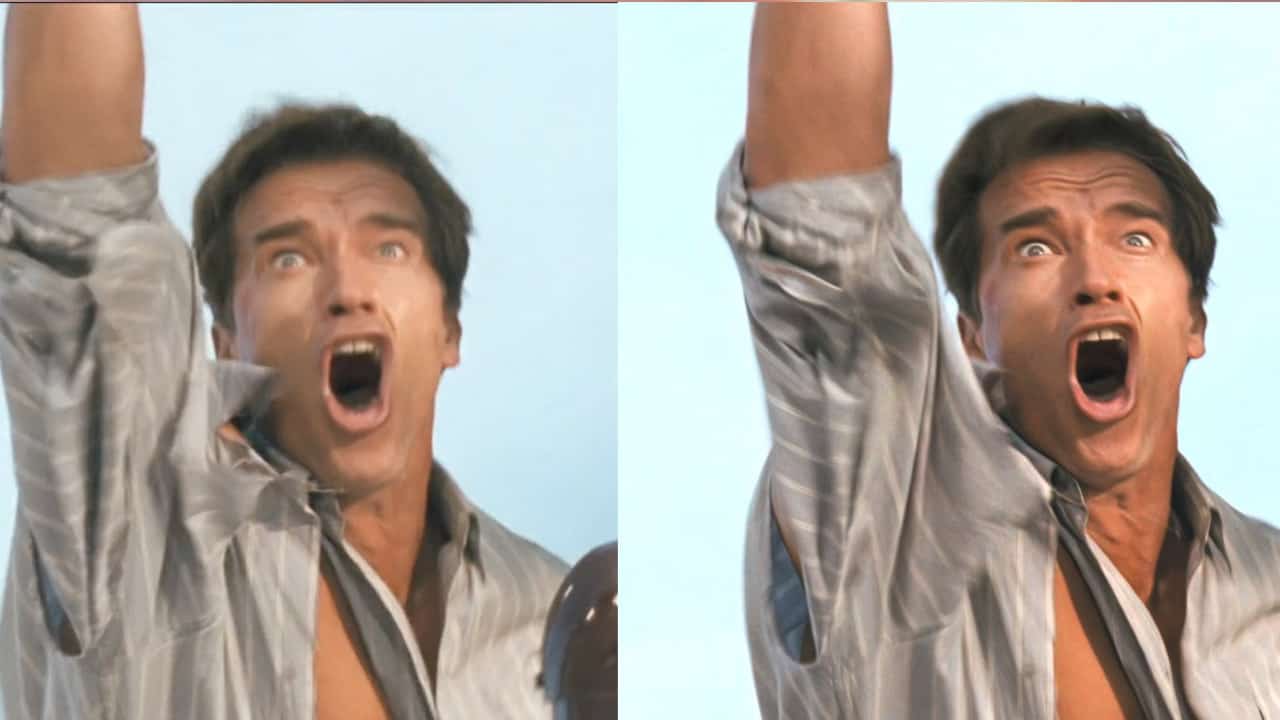However, only some people think the restorations are bad, and now they have a surprising advocate – noted film preservationist Robert Harris. Harris is the man behind the famous restorations of Lawrence of Arabia, Spartacus, The Godfather trilogy and many more. In a post to Home Theatre Forum, he acknowledged how different they look, but also explained that’s not necessarily a bad thing. On True Lies, “Shot 35 and blown up to 70, the visuals of the new 4k UHD are absolutely not what the film was upon release, but the secret sauce works, and allows a presentation that appears far better than it might without it.”
In a post about Aliens, he elaborated a bit more on why these restorations have his approval. “Original prints were on the grainy side, as a higher speed stock was used. I always thought it looked fine, as that was the look. No problem. But there were those who felt that it was too grainy. Enter the new 4k UHD from Disney via Fox, and it has an entirely new look. And it’s a look that I like. Very much! The image has been de-grained, with zero loss of resolution, which if anything as been slightly heightened. Color are meticulously reproduced. And there’s an overall clarity that is new to the film.”
As far as Harris is concerned, these restorations have been done the right way, and there is a lot of logic behind what he says. Cameron always favoured shooting his film in a process called Super 35, as it allowed him to print a larger film frame on the stock that would make the home video releases look better. In True Lies or Titanic, he was able to show the films in 2:35:1 scope theatrically. Then, when reformatted to 1:33:1 (the standard TV ratio in the era before widescreen TVs), he could reveal more of the frame at the top and bottom, avoided the pan-and-scan look common at the time, making the films play better at VHS. The downside was Super 35 was grainy. This wasn’t super noticeable on DVD and even 1080p Blu-rays, but it proved problematic on 4K, hence the restoration.



I get that as someone who uses ‘Fuzzy Select’ to a certain extent I’m full oh shit here, but I don’t think things which can’t perceive should be putting out art.
I also see no point in "re"storing art to a higher quality or resolution than it originally was. That seems like wasted effort which could have been directed toward a sequel.
I’d agree that just taking the raw output from an AI and putting it out without any changes probably isn’t going to go well. But I don’t think there’s any harm in a human using it as a tool - much like you using “fuzzy select” in Photoshop doesn’t have any effect on someone’s judgement/appreciation of your end result. Because ultimately, to the audience, the result is the important thing, not the process. 99% of people aren’t going to care how it was done, just that they like how it looks.
I don’t see it this way, personally. I’ve definitely seen films where dated special effects or other technical aspects can break my immersion. I’m not someone who’ll refuse to watch old films, but it doesn’t necessarily mean I don’t appreciate things being updated to meet more modern technical standards (ideally the old versions will be preserved, though) if the original artistic vision can be upheld (or even executed on even better than at the time).
As for directing that effort towards a sequel, I think there are plenty of reasons why they might not want to. Maybe they don’t have any further stories they want to tell with the characters or setting. Maybe the actors don’t want to be involved. Maybe they have an idea but can’t get a good script going. Maybe they can’t get financing. A couple of people going through upscaling/restoring the film is very different from creating a new film!